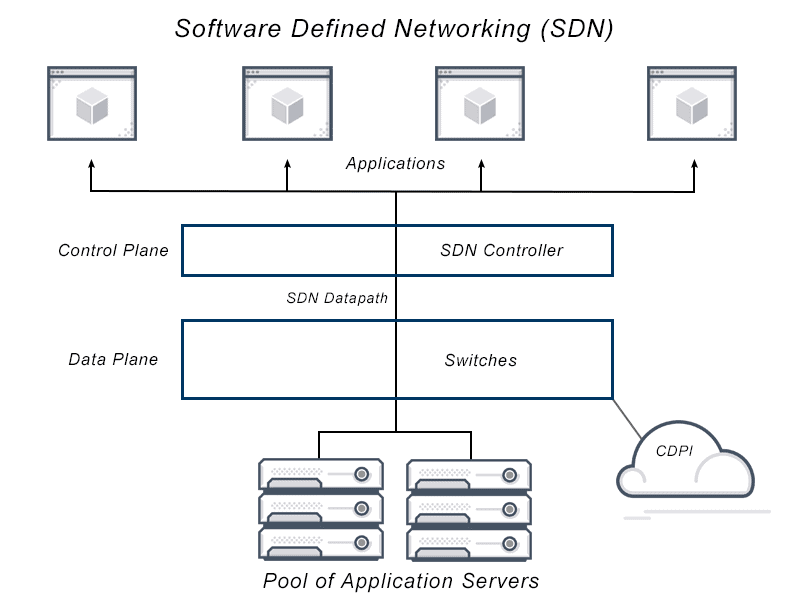Software Defined Networking Definition
Software Defined Networking (SDN) is an architecture that gives networks more programmability and flexibility by separating the control plane from the data plane. The role of software defined networks in cloud computing lets users respond quickly to changes. SDN management makes network configuration more efficient and improves network performance and monitoring.

What is Software Defined Networking?
Software Defined Networking (SDN) enables directly programmable network control for applications and network services. Software defined network architecture decouples network control and forwarding functions from physical hardware such as routers and switches to create a more manageable and dynamic network infrastructure.
SDN architecture includes the following components:
• SDN Application — Communicates network resources and network devices to the SDN controller through the northbound interface (NBI).
• SDN Controller — Translates the requirements from the SDN application layer to the SDN datapaths. It also provides the SDN applications with a central repository of network policies, a view of the networks and network traffic.
• SDN Datapath — Implements switches that move data packets on a network.
• SDN API — Application program interfaces (APIs) provide both open and proprietary communication between the SDN Controller and the routers of the network.
How to Implement Software Defined Networking?
Implementing software defined networking basics without purpose and planning is not advised.
The following tips will ensure a smooth network management process:
• Define a use case — Be sure there is a real problem for SDN to solve. Focus on that one, clear issue with a use case. This will allow for measurable outcomes and lessons that can be applied elsewhere when fully implementing SDN.
• Create a cross-functional team — Do not implement SDN in silos. A team with a diverse skills is needed for successful implementation. Collaboration is key.
• Test first — Try a non-critical network area for initial SDN implementation before changing the entire network.
• Review — Measure data to see if test outcomes meet goals. Be sure SDN is solving a problem before implementing it across the network.
How Does Software Defined Networking Work?
A software defined network uses a centralized SDN controller to deliver software-based network services. A network administrator can manage network policies from a central control plane without having to handle individual switches.
SDN architecture has three layers that communicate via northbound and southbound application programming interfaces (APIs). Applications can use a northbound interface to talk to the controller. Meanwhile, the controller and switches can use southbound interfaces to communicate.
The layers include:
• Application layer — SDN applications communicate behaviors and needed resources with the SDN controller.
• Control layer — Manages policies and traffic flow. The centralized controller manages data plane behavior.
• Infrastructure layer — Consists of the physical switches in the network.
Benefits of Software Defined Networking
Software defined network (SDN) basics include the following benefits:
• Control — Administrators have more control over traffic flow with the ability to change a network’s switch rules based on need. This flexibility is key for multi-tenant architecture in cloud computing.
• Management — A centralized controller lets network administrators distribute policies through switches without having to configure individual devices.
• Visibility — By monitoring traffic, the centralized controller can identify suspicious traffic and reroute packets.
• Efficiency — Virtualization of services reduces reliance on costly hardware.
Does Avi Network offer Software Defined Networking?
Yes. Built on software-defined principles, Avi extends L2-L3 network automation from SDN solutions to L4-L7 application services. Avi offers native integration with industry-leading SDN and network virtualization controllers such as Cisco APIC, VMware NSX, Nuage VSP, and Juniper Contrail. Avi delivers multi-cloud application services that include enterprise-grade load balancing, actionable application insights, and point-and-click security.
For more on the actual implementation of load balancing, security applications and web application firewalls check out our Application Delivery How-To Videos.
For more information see the following software defined networking resources: